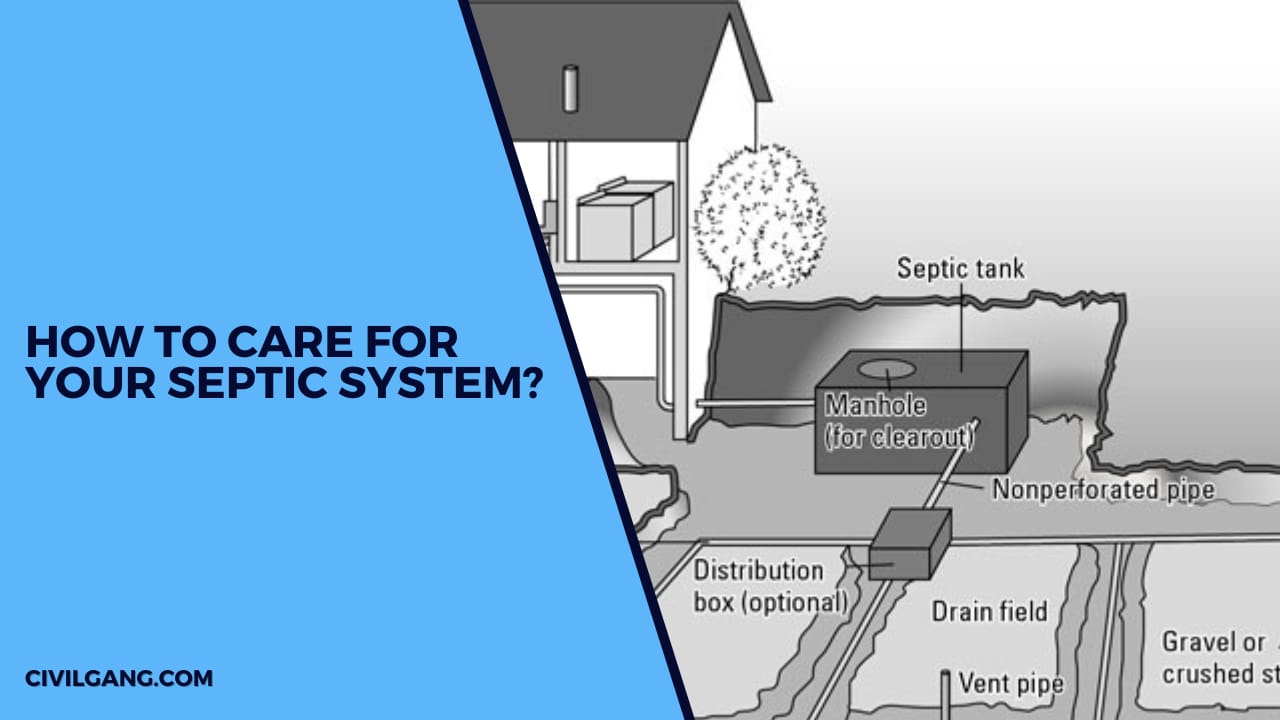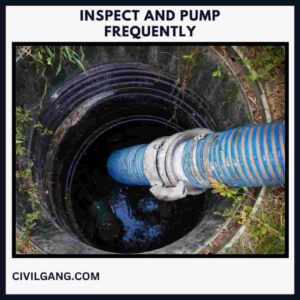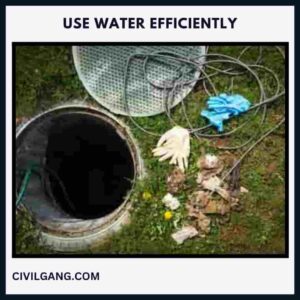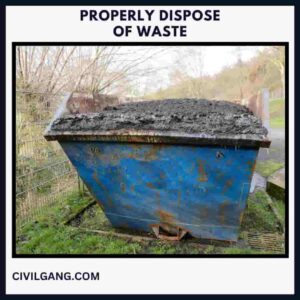How to Care for Your Septic System?
You’re pretty familiar with either the shape and structure of a septic system if people live in a small region or own a vacation house in the middle of nowhere.
In a nutshell, a septic system it’s just your own sewage treatment plant on your property. It’s mostly utilized in situations when a municipal sewer system isn’t accessible or isn’t cost-effective.
When maintained properly, a septic system is undetectable and odourless. A septic system does not require much upkeep. A tank that is well-built and well-maintained may endure eternally.
However, after approximately 15 to 20 years of operation, the leach field, which is the subterranean region in which all of the sewage drainpipes are situated, will almost certainly require significant treatment or maybe replacement.
Following just few easy guidelines, such as avoiding utilizing far to much water but not putting things in the septic tank which bacteria can’t digest, should keep a septic system running well for many years.
- When too many sediments develop in the septic tank, it needs cleaning out, as per appropriate septic tank maintenance.
- Consider what you and your family put into your septic system when thinking about septic tank repair. It doesn’t take much to disturb the tank’s delicate biological equilibrium.
You can extend the life of a septic system by keeping an eye on everything that goes into it and following these maintenance guidelines:
- Examine your system and preserve detailed records. Inspect your system on a regular basis for proper maintenance and arrange your system’s documents, such as diagrams, system maintenance, and so on.
- Septic tanks should be pumped out on a regular basis. Pumping your septic tank every one to three years is the industry norm to guarantee that particles are adequately broken down and do not block the drain field. Pumping on a regular basis can assist avoid system failure and extend the life of your system.
- Conserve water and keep track of your consumption. Furthermore, dumping more water into the system than it can handle might cause it to back up, which is not a good thing.
- Excessive usage of any home chemicals is not recommended. Home detergents, bleaches, drain cleaners, and other household chemicals can be used in regular doses without disrupting the bacterial action in the septic tank. Cleaning water for latex paintbrushes and cans, for example, should not be dumped into the home sewage.
- Coffee grinds, cooking grease, wet-strength towels (paper towels that don’t disintegrate readily, such as the heavy-duty variety), disposable diapers, face tissues, cigarette butts, and other non-decomposable items should not be disposed of in the home sewage. These items will not degrade, will overflow the septic tank, and will cause the system to get clogged.
- Grease should not be flushed down the toilet. It can clog sewer pipes or clog the entry to the septic tank. Waste grease should be kept in a separate container and discarded with the rubbish.
- Every one to three years, a professional should pump and clean your septic tank. Solids must be evacuated from a septic tank more frequently in a northern climate than in a southern climate. Cooler temperatures hinder bacterial action, resulting in slower sewage solids breakdown.
- The dimensions of the tank, the amount of wastewater, as well as the amount of solids that go into these all influence how often you should get your septic tank cleaned. A constant bad odour, slow drains, and backed-up drains are all symptoms that the septic tank has to be pumped. When in uncertainty, hire a septic expert.
1. Inspect and Pump Frequently
A standard septic system should also be checked by an expert at least once every three years, and the tank drained if the inspector recommends it generally every 3 to 5 years.
Electrical float switches, pumps, and mechanical components in alternative methods should be tested more frequently, around once a year.
Your septic tank’s scum, as well as sludge layers, should indeed be examined by your service provider for leakage. Your system needs to be drained if the base of the scum layer is still within 6 inches of the base of the outlet tee or the top of the sludge layer is still within 12 inches of the outlet tee.
In your service & maintenance documents, make a note of the sludge and scum levels indicated by your network operator. This knowledge will assist you in determining how often you should pump.
- Identifying the system is part of the inspection.
- Access points are being discovered.
- Toilets need to be flushed.
- I’m looking for any signs of backup.
- Scum and sludge layers are measured.
- Detecting any potential leaks.
- Mechanical components are being examined.
- If required, pump the tank.
The number of individuals in your house, the volume of wastewater produced as a result of the number of individuals in your residence and the volume of water consumed, the amount of solids in the sewage, and the capacity of your septic tank all play a role in the frequency of pumping.
Others claim that treatments break down waste and eliminate the need for pumping. It’s not universally agreed upon whether or not additives work. Actually, the bacteria needed for efficient treatment are already present in the septic tanks.
In order to make sure that septic systems perform effectively and last for a long time, they should be pumped out at intervals. Regardless, every septic tank needs to be pumped on a regular basis.
There should be a notice about any completed repairs and if the tank is in excellent condition. As soon as the pumper suggests additional repairs that he or she is unable to make, engage someone to do them.
2. Use Water Efficiently
- In a normal single-family home, daily indoor water consumption is over 70 gallons per person. Each day, a leaky toilet can waste up to 200 gallons.
- Less water enters the septic system if a family conserves water. Septic system performance can be improved and failure risk reduced by conserving water.
- Toilets with high efficacy Toilet flushing accounts for 25–30% of total household water consumption.
- Do you know how much water your toilet takes to empty the bowl? Most older toilets have 3.5- to 5-gallon reservoirs, whereas current high-efficiency toilets consume 1.6 gallons or less of water per flush.
- If your septic system is being flooded with household water, consider lowering the amount of water in the toilet tank or replacing your existing toilets with high-efficiency versions if you don’t already have them.
- Aerators for faucets and high-efficiency showerheads Faucet aerators help you save money by reducing the amount of water you consume and the amount of water that enters your septic system.
- Showerheads with high efficiency or shower flow restrictors can also help save water. Fixtures for water Make sure the reservoir in your toilet isn’t leaking into the bowl. Before going to bed, add five drops of liquid food colouring to the reservoir.
- If indeed the coloring is still in the container the next day, the tank is seeping and needs to be repaired.
- Each day, a small trickle from either a faucet contributes hundreds of gallons of wasted water to the network. Put a cup underneath the drip for ten min to see just how much a leak increases your water usage.
- 144 times the volume of moisture in the cup (the number of minutes in 24 hours, divided by 10). This really is the maximum sum of pure water that leaks into your sewer tank on a daily basis.
3. Properly Dispose of Waste
So what would you avoid flushing down the toilet? Duct tape, feminine products, contraceptives, diapers, sanitizing wipes, cigarette butts, coffee grounds, cat litter, paper towels, as well as other kitchen and bathroom items which can clog as well as possibly impact septic entire system should they become trapped can clog and potentially damage septic system components should they become trapped.
Flushing household chemicals, gasoline, oil, pesticides, antifreeze, and paint through the system can stress or ruin the biological treatment process, as well as contaminate surface and groundwater.
Reduce the flow of floatable items like fats, oils, and grease into your tank if your septic tank pumper is concerned about swiftly building scum layers, or expect to pay for more frequent inspections and pumping.
Machines for washing clothes You can save water by selecting the appropriate load size. Using the large-load cycle to wash small loads of clothing wastes water and energy. If you don’t have the option to choose the load size, just do full loads of laundry.
While doing all of your laundry in one day may seem like a good idea, it could be detrimental to your septic system. Doing load after load deprives your septic tank of the time it needs to properly process wastes.
You can be flooding your drainfield without leaving enough time for it to recuperate. Water usage should be spaced out over the course of the week. In comparison to a normal model, the new Energy Star clothes washer uses 35% less energy and 50% less water.
4. Maintain Your Drainfield
Your septic system’s drain field is a critical component. Here are some suggestions for keeping it in good shape:
Over and around your septic system, only plant grass. The drain field might be clogged and damaged by roots from adjacent plants or shrubs. Any portion of your septic system should not be driven or parked on. This might compress your drain field’s dirt or damage your septic system’s pipes, tank, or other components.
Away from the drain field, keep roof drains, basement sump pump drains, and any rainfall or surface water drainage systems. Excessive water in the drain field delays or stops the treatment process and can cause plumbing fittings to clog.
What Is the Best Thing to Put in Your Septic Tank?
Biological Additives. Biological additives, like bacteria and extracellular enzymes, are the only acceptable septic tank treatment for promoting a healthy, natural bacterial ecosystem, maintaining an effective drain field, and protecting the health of the local groundwater.
How Often Do You Flush a Septic System?
Household septic tanks are typically pumped every three to five years. Alternative systems with electrical float switches, pumps, or mechanical components should be inspected more often, generally once a year.
How to Care for Your Septic System?
Do’s and Don’ts when maintaining your septic system.
- Inspect and Pump Frequently.
- Use Water Efficiently.
- Properly Dispose of Waste.
- Maintain Your Drainfield.
Are Long Showers Bad for Septic Systems?
The long showers will put more water into your field which can over load your field and excess water/effluent can surface.
Is Ridex Good for a Septic System?
How additives, like Rid-x, interfere with your septic system’s eco-system. According to the EPA and the Ohio Department of Health, not only are additives like Rid-X not recommended, but they actually have a detrimental and potentially hazardous effect on your septic system’s waste treatment process.
What Are the Do’s and Don’ts of a Septic Tank?
DON’T flush material that will not easily decompose, such as hair, diapers, cigarette butts, matches, or feminine hygiene products. DO conserve water to avoid overloading the system. They kill the bacteria needed to decompose wastes in the septic tank and drain field. DO use substitutes for household hazardous waste.
Is Beer Good for Septic Tanks?
Do not flush meat, buttermilk, yeast, vegetables, beer, etc. down your drain to “Feed” your septic system. This will kill the good bacteria in your septic system.
Septic System Do’s and Don’ts
Don’t plant trees close to your septic system. Roots can clog pipes and drain fields. Don’t dispose of oils, paper towels, dental floss, hair trimmings, coffee grounds, kitty litter, feminine hygiene items, latex and plastic materials, cigarettes or other trash into the septic system. Don’t use septic system additives.
Diy Septic System Care Guide
- Pump the Septic Tank Regularly.
- Inspect the System for Leaks.
- Clearly Mark off and Maintain the Leach Field.
- Limit Water Usage and Household Waste.
- Use a Bacteria Additive.
- Install an Effluent Filter.
- Check the Leach Field for Clogs.
Septic Tank Pumping Frequency
The average household septic system should be inspected at least every three years by a septic service professional. Household septic tanks are typically pumped every three to five years.
How to Maintain a Septic Tank?
10 Tips for Maintaining Your Septic Tank
- Keep Up with Routine Inspections.
- Manage Your Pumping Schedule.
- Try a Bacteria Additive.
- Be Smart About What You Flush or Drain.
- Know Your Drain Field.
- Keep an Eye on Your Lawn.
- Consider How You Dispose of Food.
- Install an Effluent Filter.
Septic Tank Maintenance Guide
The Ultimate Septic Tank Maintenance Checklist
- Schedule a septic pumping every 2-3 years.
- Only flush things that are meant to be flushed.
- Keep cooking oil away from the garbage disposal.
- Save water.
- Watch the lawn.
- Dispose of household chemicals properly.
- Plant trees away from your drainfield.
How Often Should You Put Ridex in Your Septic Tank?
RID-X is natural & safe for pipes and septic systems. Always remember to use RID-X once per month along with regular pumping. 9.8 oz is 1 monthly dose for septic tanks up to 1500 gallons.
Beer in Septic System
Do not flush meat, buttermilk, yeast, vegetables, beer etc. down your drain to “Feed” your septic system. This is misinformation and will overload your septic system. Do not let faucets or toilets drip or run.
How Often Do You Put Yeast in a Septic Tank?
Once a month, perhaps on the same schedule as replacing your A/C filter, flush the contents of one 1/4 oz packet of active dry yeast down the toilet closest to your main line.
How to Care for Your Septic System?
Caring for your septic system is essential to ensure its proper functioning and longevity. Septic systems are an underground wastewater treatment system commonly used in rural and suburban areas. Proper maintenance helps prevent costly repairs and protects the environment.
How to Care for a Septic System?
Caring for a septic system is crucial to ensure its proper functioning and to avoid costly and messy issues down the road. Here are some essential tips on how to care for a septic system:
- Regular inspections: Have your septic system inspected by a professional at least once every three years. This will help identify any potential problems early on and allow for timely maintenance.
- Pumping: Schedule regular pumping of the septic tank. The frequency depends on the size of the tank and the number of occupants in your household, but it’s typically recommended to pump every 3 to 5 years. Pumping removes accumulated solids and prevents them from clogging the drain field.
- Be water-conscious: Avoid excessive water usage, as this can overload the system. Fix any leaks promptly and consider using high-efficiency appliances and fixtures to reduce water consumption.
How to Find Septic Drain Field?
If you know where your septic tank is located, you can use that as a starting point to find the drain field. Once you’re at the septic tank, the tank’s outlet will indicate the effluent drain line’s location. This line will lead to the leach field or drain field.
Septic Tank Winter Care
Any septic system requires an insulating cover or blanket to trap heat inside the system and prevent it from freezing inside, especially when snow falls on top. 2. Snow compaction. Vehicles driving over a septic tank compact snow and push it deeper into the system.
How Do I Keep My Septic System Healthy?
Redirect water from your roofdrains or yard away from your septic system, especially the drainfield. Throw food scraps and excessive soaps, oils and greases into the trash to keep them out of the drain. Keep strong chemicals, cleaners, and additives out of the septic system.
Like this post? Share it with your friends!
Suggested Read –
- Cost of Septic Pumping
- What Is a Septic Pump
- Concrete Septic Tank Diagram
- Signs Your Septic Tank Is Full
- Plastic or Concrete Septic Tank
- Signs of Septic System Failure
- Common Septic Tank Problems
- Leach Field Leaking in One Spot
- How Much to Empty a Septic Tank
- Septic Tank Cleanout Pipe Location
- Septic Tank Drain Field Repair Cost
- What Are the 3 Types of Septic Systems?
- Drip Distribution Septic System | What Is Drip Distribution Septic System | Advantages & Disadvantages Drip Distribution Septic System
- How Do I Find My Septic Tank Cleanout | What Is a Sewer Cleanout? | Where Are Sewer Cleanout Pipes Located?
- How Much Does It Cost to Pump a 1000 Gallon Septic Tank ? | Why Septic Tank Pumping? | What Else Does a Septic Pumping Service Do?
- How Often a Septic Tank Be Pumped | How to Identify the Septic Tank Is Full | How Often Do I Get My Septic Tank Pumped
- How Much Does Septic Tank Emptying Cost | Cheapest Septic Tank Emptying | Septic Tank Cleaning How Much Does It Cost | How Much Does It Cost to Empty a Septic System | How Much Empty Septic Tank





Leave a Reply